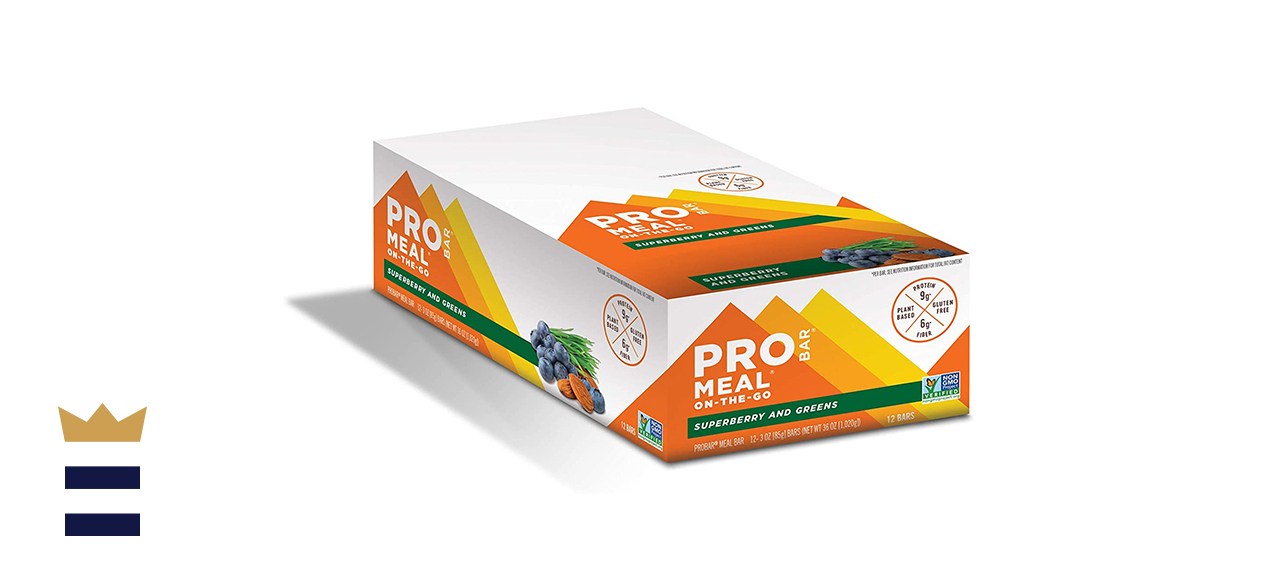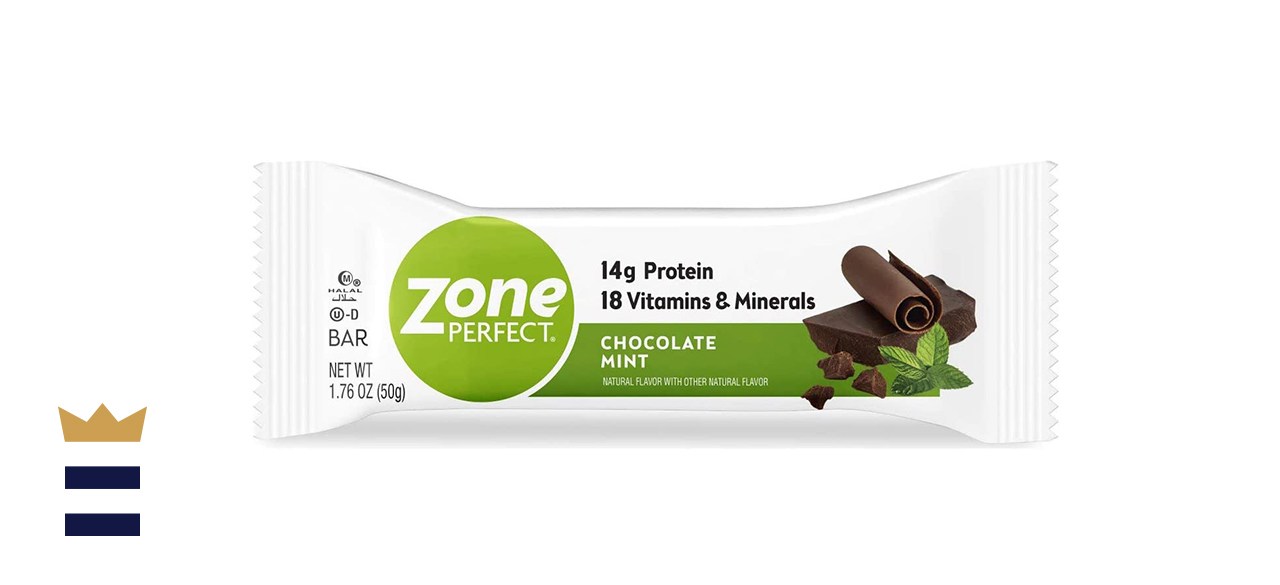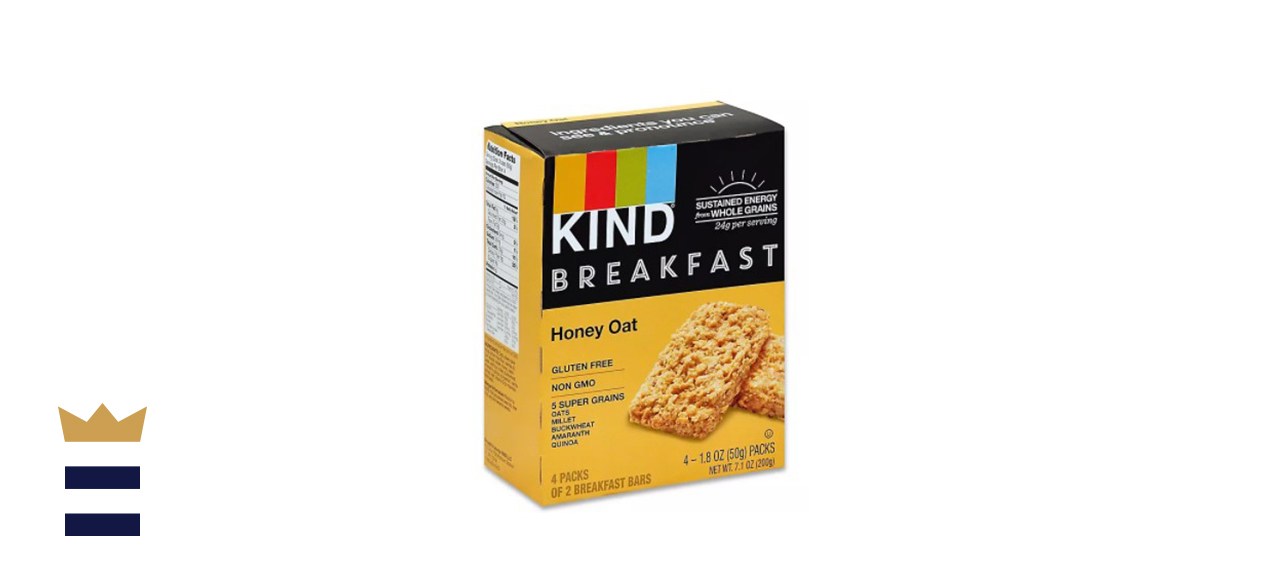Which meal replacement bars are best?
They say breakfast is the most important meal of the day, but lunch and dinner are not far behind. Unfortunately, many of us do not have the time or opportunity to prepare or purchase traditional meals three times a day. Some diet plans encourage the use of meal substitutes, either to control caloric intake or to provide more balanced nutrition. This is why many people turn to meal replacement bars, which are formulated to provide at least 20% to 35% of the recommended daily allowance.
Meal replacement bars are often sold as part of a larger diet plan, such as Atkins, keto or paleo, but they can also be purchased as occasional meal substitutes for camping or hiking. The ingredients often include natural sources of proteins, fats, and fiber, plus appealing flavor profiles that satisfy cravings for less healthy sweets. A quality meal replacement bar should stave off hunger pangs for several hours and also provide a proper balance of nutrients and vitamins.
If you are looking for a healthy and delicious meal replacement bar, consider our helpful shopping guide. We have compiled a shortlist of worthwhile contenders, and at the top of that list is the PROBAR Meal Bar, a nutrient-packed product compatible with most diet plans and featuring a wide array of flavor combinations.
Considerations when choosing meal replacement bars
Nutritional value
One common criticism of meal replacement bars is that they are closer to candy bars than healthy meal alternatives. There are a few products that are promoted as meal replacement bars that do contain high levels of fats, sugar, and complex carbohydrates. The best way to tell the difference is to consult the nutritional label on the individual bar or box.
Healthy meal replacement bars should contain less than 5 grams each of both fats and sugar. The total net carb count should be fewer than 10 grams. Fiber is an important component, so look for 3 to 5 grams per serving. Plant or animal-based protein will satisfy cravings for hours, so there should be 10 to 15 grams per bar. The total calorie count should range between 200 and 300 per serving.
Protein sources
While many meal replacement bars are considered vegan-friendly, there are some that use animal-based products as their protein source. Egg albumen, whey and calcium caseinate may be present in meal replacement bars, so consumers with ovo-lacto allergies or who are on vegan diet plans should read the ingredient list carefully.
Plant-based proteins are also common sources of protein in meal replacement bars. Yellow peas produce a complete protein that is rich in iron and are also considered heart-healthy. Nuts and seeds, such as peanuts, almonds or sunflower seeds, also provide variable levels of protein. Consumers with known tree-nut allergies should search for alternative products, however.
Other sources of protein include brown rice, which is especially recommended for consumers who are lactose intolerant. Some brands sold in health stores use a form of algae called spirulina as their protein base. Spirulina is promoted as rich in vitamins, minerals and other essential nutrients.
Flavor profiles
Many meal replacement bar formulas are on the sweeter side of the flavor spectrum, not the savory. Common ingredients include chocolate, marshmallow, peanut butter and corn syrup. These ingredients, along with dried fruits, nuts and yogurt, are often combined to create appealing flavor profiles.
A chocolate and marshmallow combination on a graham cracker base, for example, resembles the popular trail snack called S’mores. Some bars may be packed with dried fruits and nuts. Others use natural flavorings such as vanilla or lemon extract to create consumer appeal. Regardless of the flavor profile, the total sugar count should be less than 5 grams.
Healthier content
Many dieters seek out healthier products promoted as “organic” or “whole grain” or “non-GMO,” and meal replacement bars are no exception. The term “organic” itself can refer to a wide range of natural ingredients, some of which are not any healthier than their processed counterparts. A better search term would be “100% organic,” or “certified organic.”
Non-GMO ingredients have not been genetically modified by producers. While flour may start out as a whole grain, it is often refined by mills and loses some of its nutritional value. Whole grains such as oats, quinoa, buckwheat and brown rice are all considered healthier ingredients in a meal replacement bar.
Meal replacement bars price
The least-expensive meal replacement bars can be found on store shelves for less than $1 each, but their nutritional value and flavor profile can be variable. The midrange products often sold in multi-packs should average between $1-$2.50 per bar. Premium meal replacement bars, often promoted as part of a larger diet plan, can easily cost $2.50 or more per bar, but the ingredient list and flavor profile is generally more appealing.
Meal replacement bars FAQ
Q. Are meal replacement bars vegan-friendly?
A. There are some meal replacement bars promoted as vegan or non-GMO or keto-friendly, but it pays to read the list of ingredients. Some brands may include glycerin, an ingredient sometimes derived from animals. Others can have meat-based proteins or at least ovo/lacto sources.
Q. Is a meal replacement bar the same as a protein bar?
A. In most cases, no. A protein bar is formulated to boost muscle-building proteins, often as part of a workout program. A meal replacement bar contains a balance of protein, fats, fiber, and vitamins that matches the nutritional value of a complete meal.
Meal replacement bars we recommend
Best of the best
Our take: For those who seek a nutritious plant-based meal replacement bar with only 360 calories, this non-GMO product is worth considering.
What we like: Non-soy, plant-based protein sources. Good variety of flavors. At least 70% natural/organic content. Ingredients include “super fruits” and fiber-rich greens.
What we dislike: Expensive price point. Contains wheat derivative, not entirely gluten-free.
Where to buy: Sold by Amazon
Best bang for your buck
ZonePerfect’s Classic Protein Bar
Our take: This bargain-priced bar is packed with protein and vitamins, with a texture that should appeal to both children and adults.
What we like: Contains no artificial sweeteners but still low calorie. Chocolate and marshmallow flavor profile. Nutritious between-meal snack. Affordable price point.
What we dislike: Calorie count (240) is surprisingly low, may not satisfy hunger. Limited flavor selection.
Where to buy: Sold by Amazon
Worth checking out
Our take: While not ideal as lunch or dinner replacements, these grain-heavy breakfast bars pack a lot of flavor in a smaller serving size.
What we like: Offers 200 calories per bar, easy for dieters. Wide variety of flavor profiles. Gluten-free but high grain content.
What we dislike: Protein content is minimal. Better as a between-meal snack.
Where to buy: Sold by Amazon
Sign up here to receive the BestReviews weekly newsletter for useful advice on new products and noteworthy deals.
Michael Pollick writes for BestReviews. BestReviews has helped millions of consumers simplify their purchasing decisions, saving them time and money.
Copyright 2021 BestReviews, a Nexstar company. All rights reserved.





